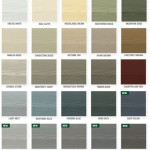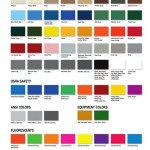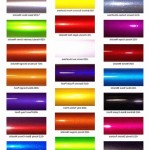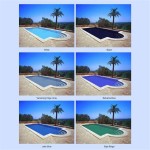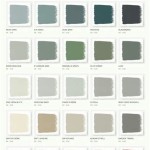Outer House Painting Colour Combinations: A Comprehensive Guide
The external appearance of a house is a crucial element of its overall aesthetic appeal and significantly contributes to its curb appeal and perceived value. Choosing the right colour combination for the outer house painting is a vital decision that requires careful consideration of various factors, including architectural style, surrounding environment, and personal preferences. This article will explore essential principles and proven colour combinations for exterior house painting to help homeowners make informed choices.
Selecting exterior paint colours is more complex than choosing interior shades. Exterior colours are subject to diverse environmental influences, including sunlight, shadows, and the colours of surrounding landscaping. These elements can drastically alter the appearance of paint colours, making it essential to consider them when selecting an exterior palette. Furthermore, durability and weather resistance are paramount considerations. Exterior paint needs to withstand the elements, maintaining its integrity and vibrancy for an extended period. Failure to account for these factors can lead to a disappointing result, requiring costly repainting in the near future.
Understanding Colour Harmony and the Colour Wheel
A fundamental understanding of colour theory provides a solid foundation for selecting harmonious exterior paint combinations. The colour wheel is a visual representation of colours arranged according to their chromatic relationship. It comprises primary, secondary, and tertiary colours, offering a framework for creating balanced and visually appealing palettes.
Complementary colours are located opposite each other on the colour wheel. When paired, they create a bold and vibrant contrast. Examples include blue and orange, red and green, and yellow and purple. While complementary colour schemes can be visually striking, they require careful application to avoid appearing jarring or overwhelming. A common approach is to use one colour as the dominant shade and the other as an accent.
Analogous colours are located adjacent to each other on the colour wheel, creating a harmonious and unified effect. Examples include blue, blue-green, and green; or yellow, yellow-orange, and orange. Analogous colour schemes are typically more subtle and calming than complementary schemes. They work well for creating a cohesive and inviting exterior.
Triadic colours are three colours equally spaced on the colour wheel. Examples include red, yellow, and blue; or green, orange, and violet. Triadic colour schemes offer a balance between harmony and contrast. They can be visually stimulating without being overwhelming, especially when one colour dominates and the others are used as accents.
Monochromatic colour schemes involve using different shades, tints, and tones of a single colour. This approach creates a sophisticated and understated look. Monochromatic schemes can be particularly effective for highlighting architectural details and creating a sense of unity.
Considerations for Architectural Style and Neighbourhood Context
The architectural style of a house plays a significant role in determining suitable exterior colour combinations. Certain colours are traditionally associated with specific architectural styles and contribute to preserving the historical accuracy and aesthetic integrity of the building. Furthermore, the surrounding neighborhood context should be considered. Choosing colours that complement the existing houses in the area can contribute to a cohesive and harmonious streetscape.
For example, historic homes often benefit from historically accurate colour palettes. Researching the original paint colours used during the house's era can inform choices. Victorian homes frequently feature intricate detailing and are well-suited to rich, saturated colours like deep blues, greens, and reds, often accented with lighter trim colours. Colonial-style homes often feature more restrained palettes, typically consisting of neutral colours like white, cream, and gray, accented with darker shutters and doors.
Modern and contemporary homes offer greater flexibility in colour choices. Bold and unconventional colours can be used to create a dramatic and eye-catching effect. Neutral colour palettes with pops of colour on the front door or trim are also popular options. The key is to maintain a clean and uncluttered aesthetic that complements the minimalist design.
Craftsman-style homes are characterized by their natural materials and earthy tones. Earthy greens, browns, and grays are commonly used, often accented with natural wood trim or stonework. The goal is to create a warm and inviting exterior that blends seamlessly with the surrounding landscape.
Beyond architectural style, the surrounding environment should also influence colour selection. In coastal areas, light and airy colours like whites, blues, and greens are often preferred, reflecting the natural light and creating a sense of openness. In wooded areas, earthy tones and natural greens can blend harmoniously with the surrounding foliage. In urban environments, bolder and more contrasting colours can be used to make a statement and stand out from the surrounding buildings.
Popular and Effective Exterior Colour Combinations
Several tried-and-true exterior colour combinations consistently deliver appealing and timeless results. These combinations can be adapted to suit various architectural styles and personal preferences.
White with Black Accents: This classic combination offers a clean, crisp, and sophisticated look. White is a versatile colour that works well with various architectural styles and provides a blank canvas for highlighting architectural details. Black accents on the shutters, doors, and trim create a striking contrast and add visual interest. This combination is particularly effective for Colonial, Victorian, and modern homes.
Gray with White Trim: Gray is a sophisticated and versatile neutral that can be used in various shades, from light greys to charcoal greys. White trim provides a clean and contrasting accent, highlighting the architectural details of the house. This combination is well-suited to various architectural styles, including Craftsman, modern, and traditional homes. Different shades of grey will create very different looks. Lighter greys are softer and more inviting, while darker greys are more dramatic and modern.
Blue with White Trim and Red Door: Blue is a calming and inviting colour that evokes a sense of serenity and stability. White trim provides a crisp and clean accent, while a red front door adds a pop of colour and creates a focal point. This combination is particularly popular for Colonial and Cape Cod-style homes. The shade of blue can range from light pastel blues to deep navy blues, depending on the desired effect.
Earthy Green with Cream Trim: Earthy green is a natural and grounding colour that blends harmoniously with the surrounding landscape. Cream trim provides a soft and warm accent, creating a welcoming and inviting exterior. This combination is particularly well-suited to Craftsman, Ranch, and Tudor-style homes. Choosing the correct green can be difficult, so it's important to consider the undertones of the green and ensure they complement the other colours in the palette.
Beige with Brown Accents: Beige is a warm and neutral colour that provides a versatile backdrop for various architectural styles. Brown accents on the shutters, doors, and trim add depth and visual interest. This combination is particularly effective for traditional and Ranch-style homes. A lighter beige is more inviting, while a darker beige can be more sophisticated.
When selecting paint colours, it is crucial to obtain samples and test them on the exterior of the house. Observe the colour samples at different times of day and under various lighting conditions to ensure that the chosen colours look appealing in all situations. Additionally, consider the texture of the siding and other exterior materials, as this can also affect the appearance of the paint colour.

15 Best Colour Combination For House Exterior

What Colour Should You Get Your House Exterior Painted

15 Best Colour Combination For House Exterior

100 House Painting Colours Outside 2024 Exterior Wall Paint Color Combinations Ideas Colour 4

Dulux Exterior Paint Colours

68 Home Exterior Paint Color Ideas For A Fresh Look

Paint Colour Combination Ideas For Exterior Walls Indigo Paints

40 Best Exterior Wall Paints Colour Combinations For N Houses
Exterior House Colours 5 Modern Colour Schemes For Your Home Architecture Design

Best 400 House Painting Colours Outside 2025 Top Exterior Wall Paint Ideas Color Combinations
Related Posts

